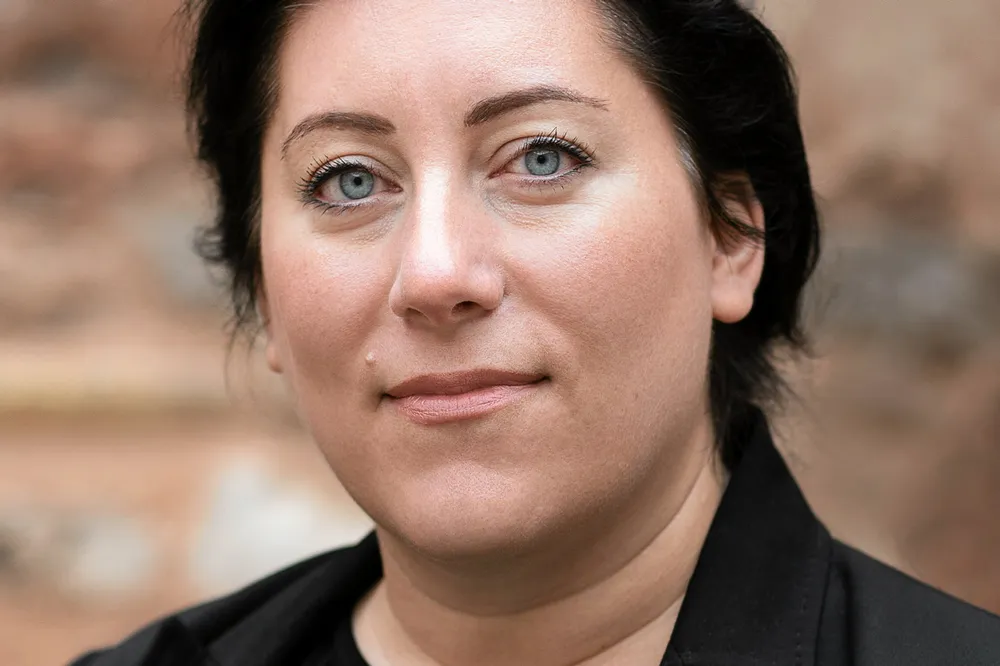‘Unparalleled uncertainty’: National Grid chief spells out North Sea interconnection challenges
INTERVIEW | National Grid is currently helping ‘write the rulebook’ on how offshore wind developers will be paid to link their projects to hybrid interconnector assets

Building an interlinked North Sea grid is critical to Europe’s offshore wind and net zero ambitions but making this a reality is taking the industry into uncharted waters with razor-fine margins between success and failure, says the head of interconnectors at National Grid.
During a recent holiday in the south of France, Rebecca Sedler, managing director of National Grid Interconnectors, said she would find herself using a tracking app on her phone to check the daily power prices in the country and neighbouring Belgium.
“Funnily enough, they’re never the same.”
"You'd expect if we have so much transmission and we're so perfectly correlated why can't even France and Belgium be perfectly correlated," she said. But in fact there is still "limited transmission" between the countries, 6GW, and power can't always flow where it's most needed.
And although, given their proximity, you might suspect the countries' power demands would be perfectly correlated, Sedler stressed there is a world of difference between sun-soaked Provence and rain-drenched Brussels, which have “very different consumption habits” and peaks in power demand.
Essentially, an excellent business case to build more interconnectors.
Power prices in Europe have dropped below zero for record-breaking durations over the last year, a symptom of not having the transmission capacity to send power where it is needed, when it is needed, which is often across international borders.
The reason for this is that countries’ grid systems are ill-equipped to effectively use all the wind, solar and other renewables resources they are bringing online.
The increase in negative power prices, which hurt the business case for the renewables buildout and energy transition, is a warning signal that grid buildout – nationally and internationally – is playing catch-up.
“We have to think about it as a collaborative European energy system,” said Sedler, who spent decade-long spells at E.ON and EDF before joining National Grid in 2022. “Otherwise nothing is going to get built.”
‘We are writing the rulebook for North Sea grid’
If building sufficient transmission capacity between France and Belgium is hard, the challenge of building a meshed North Sea power grid to effectively use its bountiful offshore wind resource is colossal.
Leaders of nine North Sea nations descended on the small Belgian coastal city of Ostend last year, where they agreed to target 120GW of North Sea offshore wind by 2030 – more than four times the 28.5GW currently in the water – and a whopping 300GW by 2050.
But without a connected offshore grid, Sedler questioned “how on Earth” it can be suggested all that planned generation can be used effectively. “We have to work this out.”
But cost aside, what stands out about these projects is the “level of uncertainty” over how they will work, which she said is “unlike anything I’ve ever seen” from an investment perspective.
Companies are planning, structuring and signing up to partnership agreements based on market regimes that “have not been designed, let alone agreed,” she said, with offshore bidding zones and carbon policy two examples.
All these variables have a huge impact on whether these projects represent good investments for developers, she said. The investment outlooks of these projects can swing from “hugely positive” down to “hugely negative with just a few, but very key, parameter changes that are all valid.”
Some of these projects, such as energy islands, envision being directly linked to wind farms, which adds a further layer of complexity, she said. “How are you incentivising them to form part of this infrastructure?”
Sven Utermöhlen, CEO of offshore wind at Germany’s RWE, recently said that despite the many good reasons for building hybrid grid connections, linking offshore wind farms to them is currently not “so appealing” as there are not yet EU regulations in place to support them.
“And make no bones about it – it’s been challenging for all parties involved.”
Call for ‘commitment and clarity’ from new UK government
The UK, which has a total 9.8GW of interconnector capacity, has a target of hitting 18GW by 2030, although Sedler said it currently looks “highly unlikely” to achieve this.
The new Labour government that swept to power last month led by Prime Minister Keir Starmer campaigned on turning the UK into a clean energy superpower, and Sedler noted it has already made several moves to boost the renewables buildout, while also making “noises about friendly relationships” with Europe.
National Grid is expecting investment decisions and regulatory deals on a new round of interconnectors in September and Sedler said there is now an opportunity for the government to give “positive signals” to investors in the sector.
This would be in the form of a commitment to remaining “very much present in European energy coordination and market arrangements,” promoting North Sea grid development “as a priority” and providing “commitment and clarity” on 2030 targets.
(Copyright)